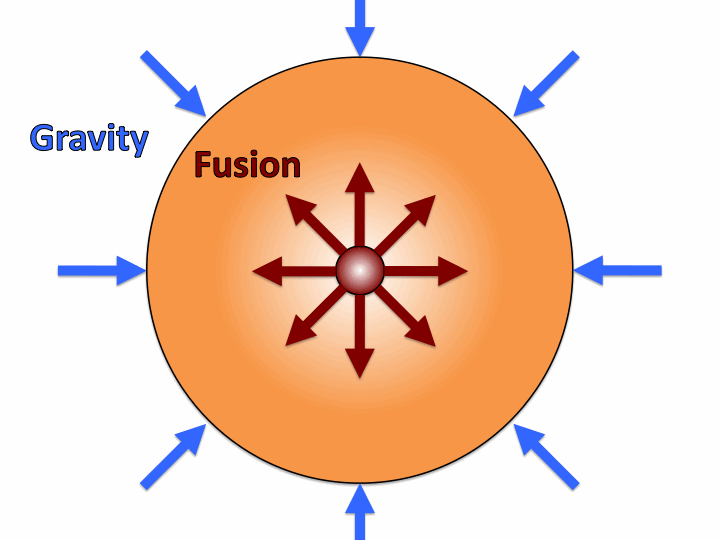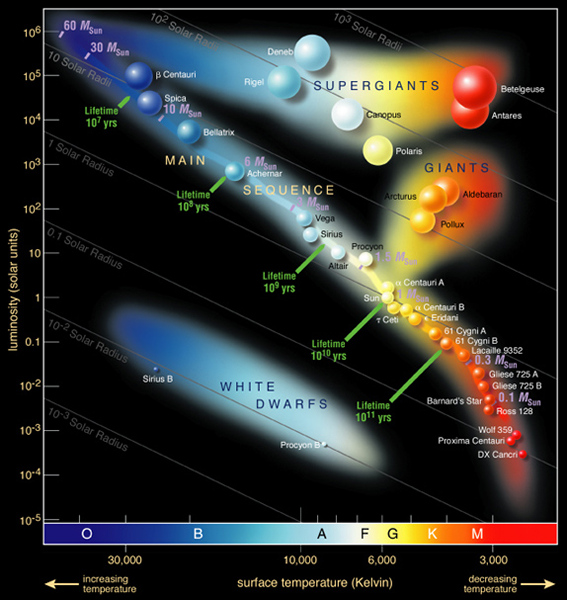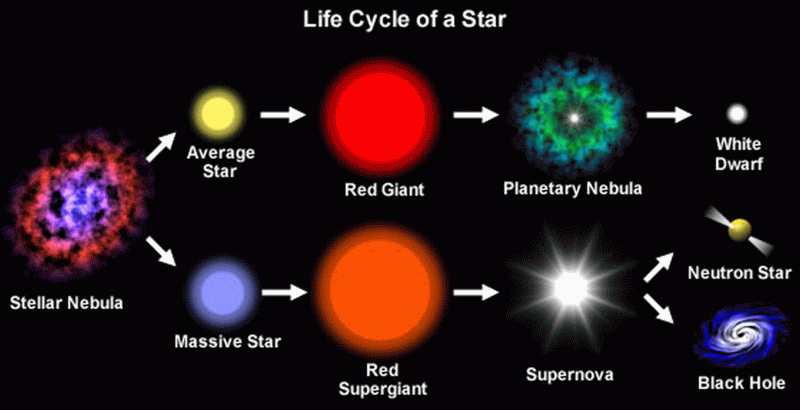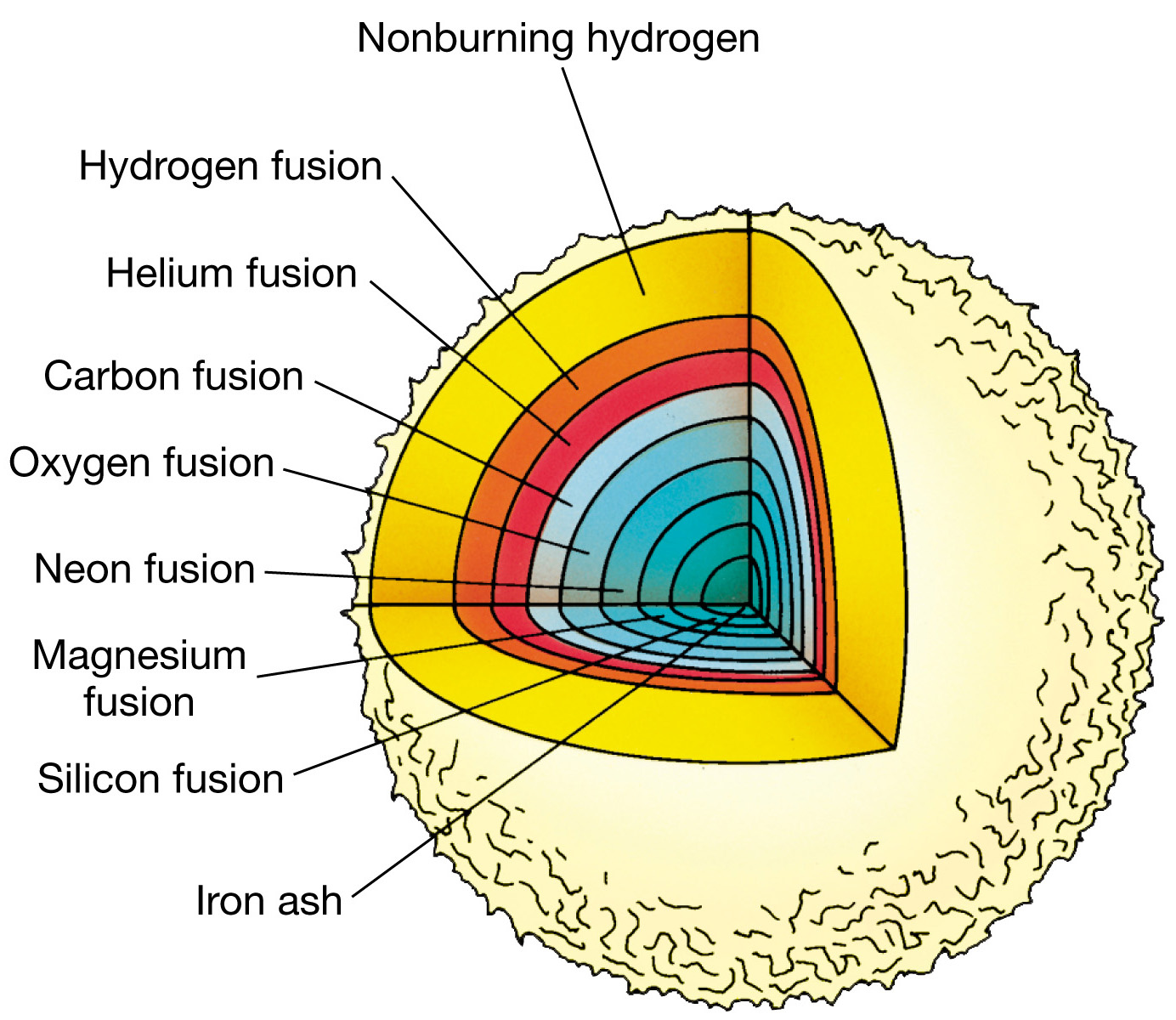La vida de la estrellas
1-2 Bachillerato (16-18 años)
Son todas las estrellas iguales? Cómo las caracterizamos los astronomos?
Material que puede añadir valor si se prepara antes de venir a ESAC :
-
Concepto de Reacciones químicas. Energía: Calor y temperatura.
-
Videos
Material que se trabajará en ESAC: Caso Científico y para descargar las fichas y la Imagen1.
Las estrellas nacen de una nube de gas y polvo en la que se crean zonas de más alta densidad de donde naceran las protoestrellas. Las protoestrellas giran sobre sí mismas y por conservación del momento angular el material que cae de sus capas más externas al disco es en parte acretado hacia la protoestrella y en parte eyectado en forma de jets muy energéticos. La fase de protoestrella termina con la formación de una estrella, cuando las reacciones nucleares en el núcleo comienzan y permiten mantener el equilibrio frente a su colapso por gravedad. El equilibrio se alcanza, tal y como muestra el dibujo por la compensación de fuerzas de fusión y gravedad. Estas reacciones nucleares iniciales transforman el H en He.

Equilibrio Hidrostático. Créditos: Universidad de Standford
Los astrónomos empleamos el diagrama Hertzsprung-Russell para trazar el estado evolutivo de una estrella. Este diagrama muestra la temperatura superficial de la estrella frente a la luminosidad de la estrella. A medida que las estrellas nacen, viven y mueren se mueven en patrones regulares en el diagrama.

El diagrama Hertzsprung-Russell en el que la evolución de la estrella tipo Sol se representa. Créditos: ESO
Durante la vida de una estrella tienen lugar varias reacciones nucleares. El nivel de complejidad de estas reacciones lo determina la masa de la estrella: las estrellas más masivas (con más masa) llegan a producir los elementos más evolucionados a lo largo de su vida. Sin embargo la proporción de elementos en todas las estrellas es más o menos parecido: un 91% de Hidrógeno, un 8 % de Helio y un 1% de metales pesados. Cuando las reacciones nucleares en el núcleo de la estrella transforman el Hidrógeno en Helio decimos que la estrella se encuentra en la fase de "Secuencia Principal ("Main Sequence").
Las estrellas que al formarse tenían una masa superior a 8-10 veces la masa del Sol, los astrónomos las consideramos, estrellas masivas. Nuestro Sol está actualmente en equilibrio (en la "Secuencia Principal") y evolucionará en unos 5000 millones de años a la fase de "Gigante Roja".

La evolución de las estrellas a lo largo de su vida depende de la cantidad de masa de la estrella cuando se formó. Créditos:students.um.edu
La estructura interna de las estrellas tiene distribución de capas de cebolla tal y como se muestra en el dibujo de abajo. Al final de su vida, una estrella masiva tiene una estructura interna que como veis tiene capas de oxígeno, neón, magnesio, silicio y hierro. Los elementos más pesados se encuentran siempre hacia el interior del núcleo.

Distribución de los elementos en el interior de una estrella masiva. Créditos:Astro-Edu.
Las regiones en las que las estrellas se forman a partir de la misma nube molecular las denominamos "cúmulos de estrellas". Estas regiones pueden ser más o menos masivas y poseer más o menos elementos pesados, lo cual dependerá del material que hubiera en la nube molecular original.
-
Esta Experiencia puede complementarse con la actividad de El Planetario de Madrid: El cielo profundo